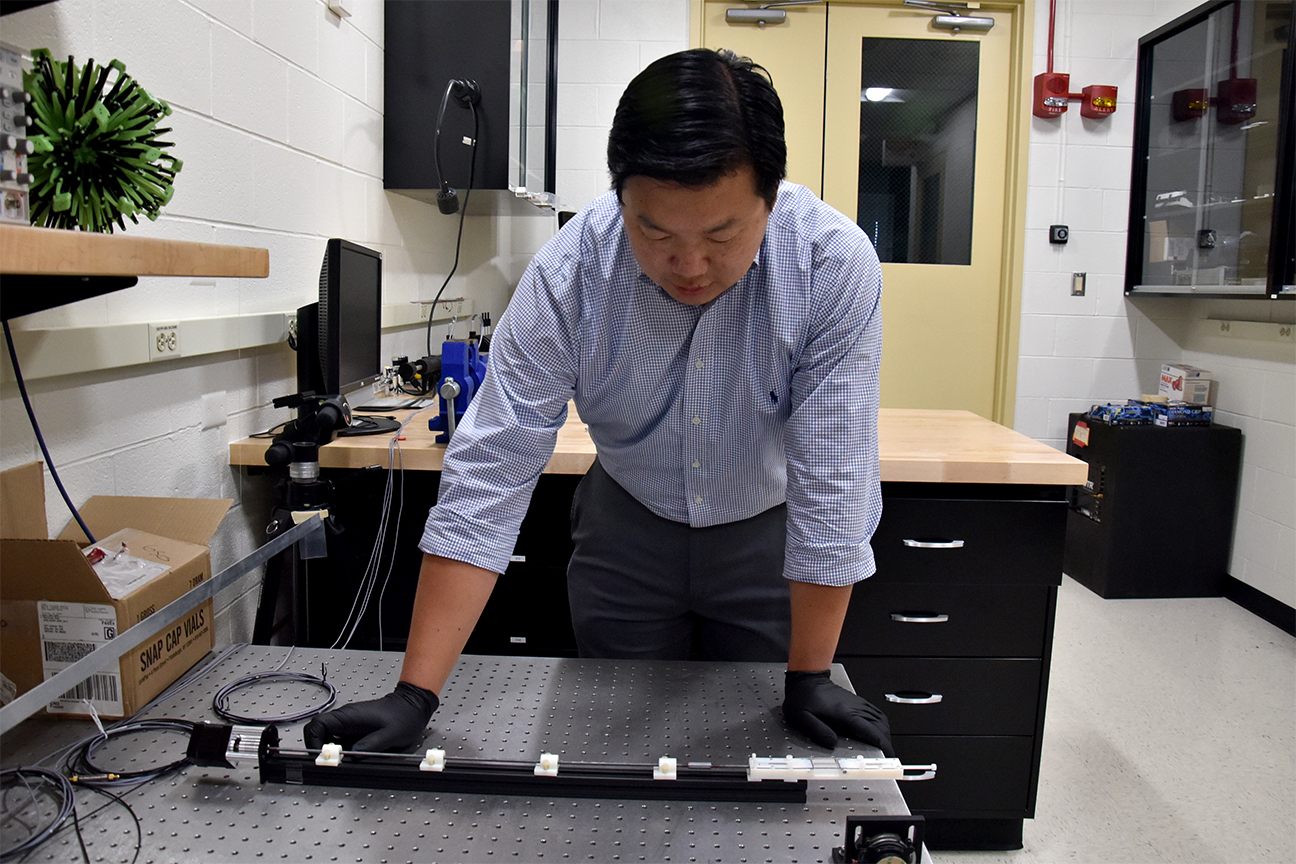WRIGHT-PATTERSON AIR FORCE BASE, Ohio – The saying “form follows function” speaks to the obvious relationship between an object’s shape and its purpose, that is, how it will be used. It seems reasonable, then, if an object can change its shape, it can be used for a broader range of purposes. Researchers at the Air Force Research Laboratory, in collaboration with academic colleagues, have used this idea as motivation for designing soft materials that can change shape under an applied magnetic field.
The research findings, published in a recent issue of the journal Physical Review Letters (PRL), demonstrated the ability of magnetic fields to reversibly change the internal structure of a magneto-active composite. Magneto-active elastomer composites are an important class of soft, shape-recoverable materials that exhibit a stiffness increase and shape change in response to an applied magnetic field. Using magnetic fields provides a fast and non-contact method to tune internal structure, which is relevant for soft actuators, adaptive vibration dampers and filtering applications.
“We are excited about the potential for magnetic tuning to improve vibration sensing and control in aircraft and other vehicle environments,” said co-author Dr. Abigail Juhl from the Materials and Manufacturing Directorate of AFRL.
Making sense of how mechanical instabilities and magnetic fields interact is a fundamental part of the work, a task undertaken recently in a paper that was submitted to PRL. The research was presented in such a clear and succinct manner that the paper, Instability-Induced Pattern Formations in Soft Magnetoactive Composites, was given special recognition by being selected as a highlighted article by PRL.
About 13 years ago, PRL’s editors decided to begin prominently highlighting certain submissions. According to PRL’s website, the goal was to “direct readers to interesting papers outside of their subfield of research in order to … restore the ability of PRL to give readers a broad view of current research.” The editors of PRL make their selection on the basis of several criteria, for example, the particular interest of the manuscript as well as the clarity of the writing.
In discussing the paper, corresponding author Dr. Stephen Rudykh of the University of Wisconsin emphasized the exciting, new directions of research motivated by this work. “The design space for architected elastomers is very rich,” he said, “with additional mechanisms for magneto-mechanical interactions to be discovered and harnessed for applications.” The Air Force Research Laboratory and University of Wisconsin team plan to build on these ideas to continue delivering reconfigurable forms for new functions.
The paper, co-authored by Artemii Goshkoderia, Vincent Chen, Jian Li, Abigail Juhl, Philip Buskohl and Stephan Rudykh, was published in the April 14, 2020, issue of PRL.

AFRL scientist, Dr. Vincent Chen, demonstrates the experimental setup used to trigger shape change in soft, magnetically responsive elastomers. (U.S. Air Force photo/Spencer Deer)

